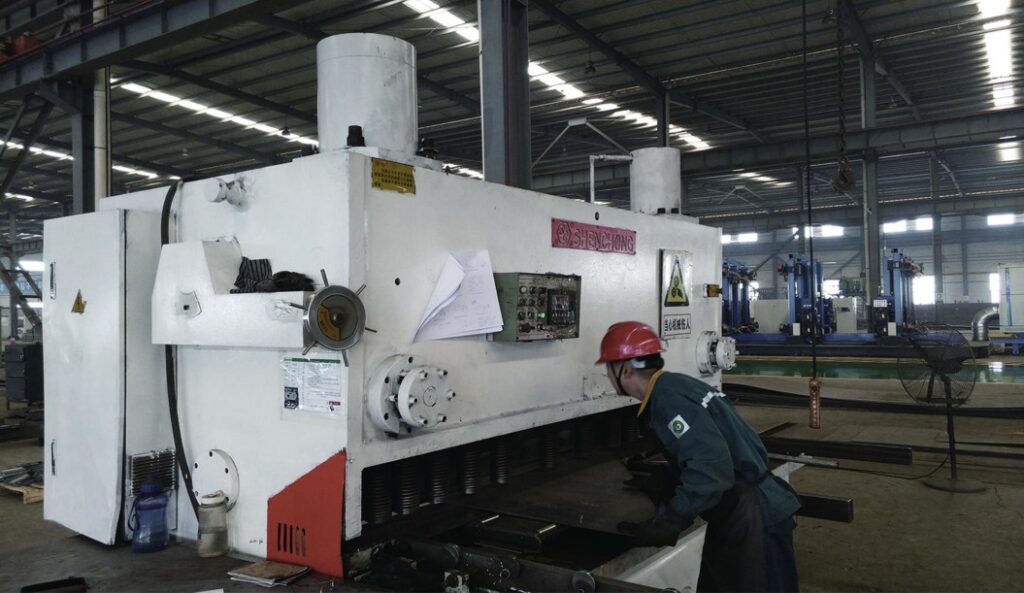
Steel Structure Fabrication: A Comprehensive Overview
Steel structure fabrication is a fundamental process in the construction industry, playing a pivotal role in the creation of buildings, bridges, industrial facilities, and other infrastructure projects. This article provides a comprehensive introduction to steel structure fabrication, covering key processes, techniques, and considerations involved in transforming raw steel materials into robust and functional structures.
Materials Used in Steel Structure Fabrication:
Steel structure fabrication primarily relies on various forms of steel, including:
- Structural Steel: High-strength steel beams, columns, and plates form the backbone of most steel structures, offering exceptional load-bearing capacity and structural integrity.
- Sheet Metal: Thin steel sheets are commonly used for cladding, roofing, and decorative elements in steel buildings.
- Reinforcing Steel (Rebar): Used in reinforced concrete structures, reinforcing steel provides additional tensile strength and structural stability.
Processes Involved in Steel Structure Fabrication:
- Cutting: Steel plates and beams are cut to precise dimensions using mechanical shears, plasma cutters, or laser cutting machines.
- Forming: Various forming techniques, such as bending, rolling, and pressing, shape steel components into desired profiles and configurations.
- Welding: Welding joins steel components together using heat and pressure, ensuring structural integrity and continuity.
- Machining: Machining processes, including drilling, milling, and threading, create holes, slots, and other features in steel components as required for assembly.
- Surface Treatment: Surface treatments such as painting, galvanizing, and powder coating protect steel structures from corrosion and enhance their aesthetic appeal.
Techniques and Tools in Steel Structure Fabrication:
- Computer-Aided Design (CAD): CAD software enables precise design and detailing of steel structures, facilitating efficient fabrication and assembly processes.
- CNC Machining: Computer Numerical Control (CNC) machines automate machining operations, ensuring accuracy and consistency in component production.
- Robotic Welding: Robotic welding systems enhance welding efficiency and quality, particularly in high-volume fabrication environments.
- Modular Fabrication: Modular construction techniques involve prefabricating steel components off-site and assembling them on-site, reducing construction time and costs.
- Quality Control: Stringent quality control measures, including non-destructive testing (NDT) and dimensional inspection, ensure that fabricated steel components meet specified standards and tolerances.
Considerations in Steel Structure Fabrication:
- Design Compatibility: Fabrication processes must align with the design intent and specifications of the steel structure, necessitating close collaboration between designers, engineers, and fabricators.
- Cost Efficiency: Optimizing fabrication techniques, material usage, and production schedules contributes to cost-effective steel structure fabrication.
- Safety: Implementing safety protocols and equipment safeguards protects workers and minimizes the risk of accidents during fabrication operations.
- Environmental Impact: Adopting sustainable practices, such as recycling steel scrap and minimizing waste generation, reduces the environmental footprint of steel structure fabrication.
Conclusion:
Steel structure fabrication encompasses a diverse range of processes, techniques, and considerations aimed at transforming raw steel materials into functional and durable structures. By leveraging advanced technologies, skilled craftsmanship, and sound engineering principles, fabricators play a crucial role in bringing architectural visions to life while ensuring safety, quality, and sustainability in construction projects. As the demand for innovative and efficient building solutions continues to grow, steel structure fabrication remains an indispensable cornerstone of the modern construction industry.
